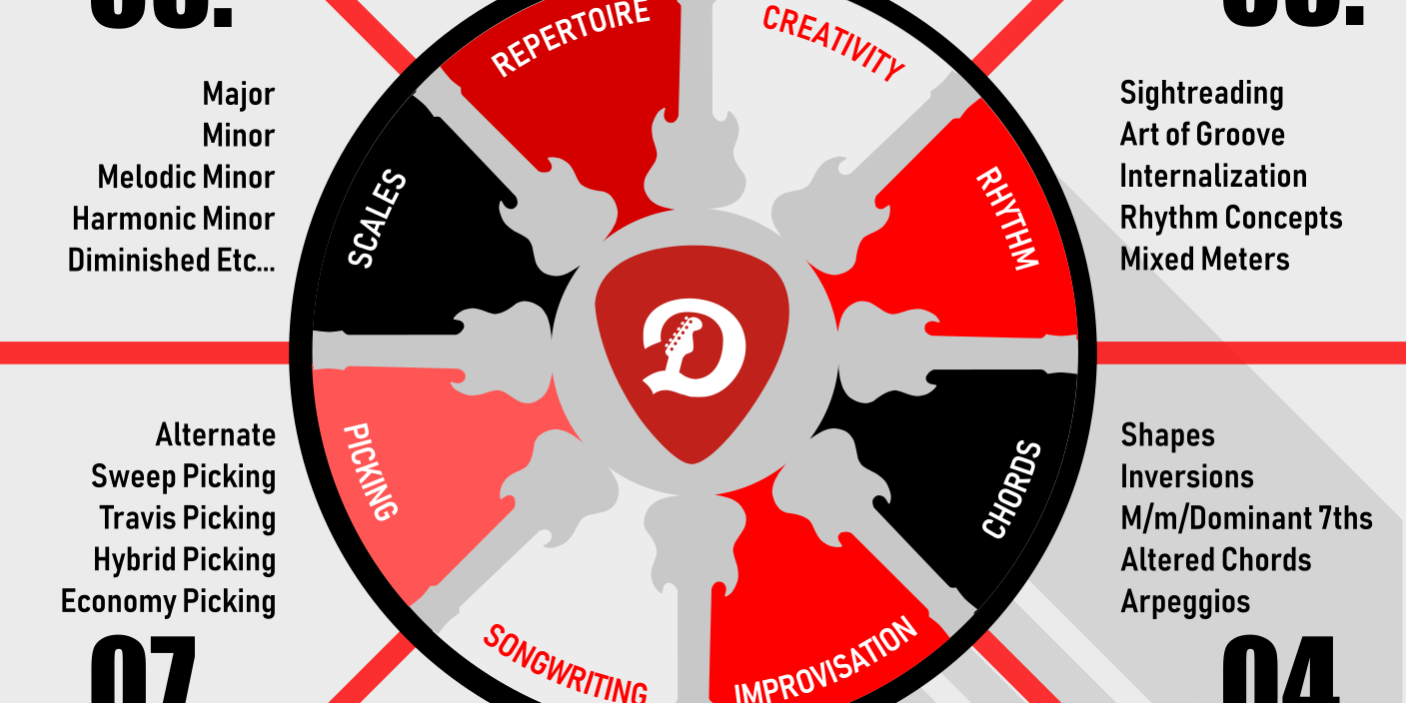Finding The Proper Balance In Your Lessons:
Finding the proper balance is a moving target. It depends on factors that change over time. Namely, where you as a player. Technically, creatively, theoretically, and what your current goals are. And, the time you have to devote to the craft. All these subjects (and more) change as you progress, and as such, you should always be looking for a way to become a better musician.
How many tunes from bands you like have you learned this year? I don’t mean “look up the tab” online, which 90% of the time is wrong. Dead wrong. I’ve lost track of how many times a student brought me something they learned online that was just flat out wrong. Sit down with the track (with youtube you can now slow down a track as much as 25%), load it into garageband, or audacity, or pick your poison. Use your ear and learn as much as you can on your own. That will get you farther so much faster than anything on ultimateguitar, or faketabs.com or whatever tab site you usually look at. Get away from that and pick apart a tune with your ear. After, try to analyze what you’ve learned and how it relates to what you now about chords, scales, theory, patterns etc.
- Check out Kiss From a Rose in our Free lessons section!
How many scale positions can you play a single scale? How many different ways? Here’s a rough idea of the crazy amount of variations that experimentation can bring. Let’s suppose we’re going with A minor. 5th position A minor. The 1st way to play would be the way you probably know, you begin the scale with your 1st finger on the low E string. What if you played this scale starting with your middle finger? The positions and notes change, because now your reach has changed. What if you used your 3rd finger? Your 4th?
The idea is that even if you know one position of a scale, there are at least 4 variations of even that one position. Now, the scale contains 7 notes, so we’re talking 7 positions on the neck to learn. 7 positions with 4 variations (this is the tip of the iceberg!). 28 variations on one scale alone without any other factors. If you know all your scales and modes in 28 variations, you are way ahead of the game as far as knowing your scales.
- Read this article to start Dominating your Scales!
How many ways do you know how to play the same chord? This is literally endless. There are so many ways. Explore this concept, either by studying the vocabulary of other players/pieces, or by using traditional theory constraints.
- Check out this article on Dominant 7th chords!
Is improvisation important in your overall goals? How well can you handle soloing over rock chord changes? How about Jazz standards? Do you find yourself playing similar ideas and don’t know how to expand? These are just a few ideas to think about addressing in your overall balance as a musician.
How many songs have you written in the last year? If writing songs either for a band or simply for your own gratification is a driving force in your playing, you should be writing lots of material. If you are not, something is wrong. As a general baseline, a serious songwriter can craft at least 4 rough songs a week. That comes out to about 192 ideas a year. This is general and not gospel, but, if you’re serious about writing and not producing content, something is out of balance with your approach.
- Looking to springboard your songwriting process?
Then the last piece (sometimes the first piece) of the puzzle. How is your sight reading? This tends to be the weakest of all pieces in a guitarist (pianists not so much, but they hate Bass clef!). Since guitar is such a “social” instrument, reading a chart and doing it often is frequently overlooked, or totally ignored. This is another skill you need! If you can do it, you will be placed at a higher value than other players, and you will gain the ability to play with many different groups for side work/main work. You also gain the ability to write down your own compositions, and rely less and less on pure memory, which is not completely reliable.





